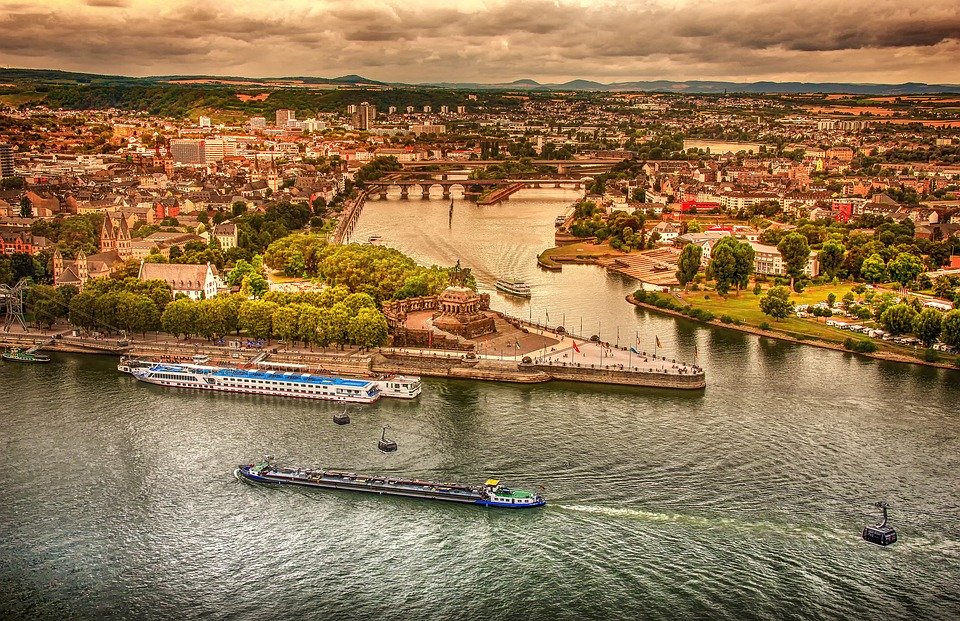Germany, known for its dynamic cities and innovative industries, also holds a treasure trove of quaint villages and charming small towns. These picturesque locales, often nestled in serene landscapes, seem to leap straight out of fairy tales. Complete with cobblestone streets, half-timbered houses, and medieval castles, small-town Germany captures the essence of old-world Europe. Whether you’re a history enthusiast, a culture lover, or simply dreaming of an enchanting getaway, this guide will take you through the spellbinding appeal of Germany’s lesser-known destinations.
Are you ready to explore the charm of small-town Germany and uncover its hidden gems?
Why Visit Small-Town Germany?
Germany’s small towns showcase everything that makes the country a magical destination: history, natural beauty, and culture. While big cities like Berlin and Munich dazzle visitors with urban energy, the smaller towns preserve Germany’s rich heritage. They offer a slower pace of life and the kind of timeless charm you’d expect from storybook landscapes.
Imagine sipping wine in a centuries-old vineyard overlooking the Rhine, wandering through Christmas markets glowing with light, or exploring castle ruins perched atop hills. Small-town Germany invites you to experience the magic of the past, blended seamlessly with modern comforts.
Must-Visit Fairy-Tale Small Towns in Germany
Wondering which small towns in Germany should top your itinerary? Here’s our curated list of the most enchanting places to explore:
1. Rothenburg ob der Tauber (Bavaria)
Rothenburg ob der Tauber is world-famous for its perfectly preserved medieval charm. As you walk along its cobbled streets, framed by half-timbered houses and ivy-covered buildings, it genuinely feels like stepping back in time. Stroll along the city’s intact walls, admire the vibrant Plönlein (a much-photographed corner of Rothenburg), or visit the stunning St. Jakob’s Church, home to a carved wooden altar by Tilman Riemenschneider.
Don’t miss:
- Night Watchman’s Tour: A guided evening walk with historical tales and medieval anecdotes.
- Käthe Wohlfahrt Christmas Village: A year-round Christmas shop filled with ornaments and decorations.
Pro tip: Visit during winter for the magical Christmas market or in spring when the Tauber valley blooms.
2. Cochem (Rhineland-Palatinate)
Standing gracefully on the Moselle River, the town of Cochem is a vision of charm. Its iconic Reichsburg Castle, perched high on a hill, offers spectacular views over the valley. The town is also known for producing some of Germany’s finest Riesling wines, making it a perfect destination for oenophiles.
Don’t miss:
- Boat cruises along the Moselle River, offering a scenic view of the lush vineyards.
- Wine tasting at local cellars.
Local tip: Take a hike to the Pinnerkreuz viewpoint for a panoramic view of the town.
3. Bacharach (Rhineland-Palatinate)
Nestled between the Rhine and gentle hills of vineyards, Bacharach epitomises everything romantic about Germany’s Rhine Valley. Its charming alleyways, medieval architecture, and rolling wine country make it a haven for those seeking tranquillity.
Highlights include:
- Post Tower (Postenturm): A beautiful viewpoint overlooking the river.
- Stahleck Castle: A castle-turned-hostel that offers stunning views.
Fun fact: Bacharach was immortalised in poems by renowned writers such as Victor Hugo.
4. Quedlinburg (Saxony-Anhalt)
Quedlinburg is a UNESCO World Heritage Site that boasts over 1,300 half-timbered houses spanning eight centuries. Its cobblestone streets wind through an architecturally rich old town. Look out for the medieval castle on the hill and the beautiful St. Servatius Collegiate Church.
What to do:
- Wander through the Marktplatz, lined with historic buildings.
- Explore the Romanesque-style Quedlinburg Abbey, which dates back to the 10th century.
Insider tip: Visit during Easter to witness the colourful local festivals.
5. Dinkelsbühl (Bavaria)
Dinkelsbühl rivals Rothenburg ob der Tauber in its medieval beauty but attracts fewer crowds, making it a more tranquil option. The colourful facades of its houses and its quaint streets make every corner feel like it belongs in a storybook.
What to do:
- Attend the Kinderzeche Festival that celebrates the town’s 17th-century history.
- Visit St. George’s Minster, a majestic late-Gothic church.
Did you know? Dinkelsbühl is frequently featured in travel photography for its incredible city walls and gates.
6. Görlitz (Saxony)
Known as the easternmost town in Germany, Görlitz has a stunning mix of Gothic, Renaissance, Baroque, and Art Nouveau architecture. It has been used as a filming location for movies including "The Grand Budapest Hotel."
Must-see highlights include:
- The historic Untermarkt square.
- Pfarrkirche St. Peter und Paul, a striking 15th-century church.
Travel tip: Cross the pedestrian bridge to Zgorzelec in Poland for a two-country experience.
Experiencing Small-Town Germany
What makes these towns so compelling is the unique blend of history, culture, and natural beauty. Here’s how to make the most of your time exploring small-town Germany:
1. Follow the Romantic Road
Germany’s Romantic Road is a 400km journey through Bavaria and Baden-Württemberg, dotted with fairy-tale towns like Rothenburg ob der Tauber, Füssen, and Dinkelsbühl. Rent a car or join a guided tour for the full experience.
2. Taste Local Specialities
Small towns are the perfect place to indulge in traditional German cuisine. From hearty stews to delicate pastries, each region boasts its own culinary specialties. Don’t pass up the chance to try Schweinshaxe (pork knuckle) or Spätzle (egg noodles). Pair your meal with a regional wine or beer for an authentic taste of Germany.
Tip for foodies: The Moselle and Rhine regions are particularly famous for their Riesling wines, while Bavaria excels in beer culture.
3. Immerse Yourself in Festivals
Germany’s small towns are known for lively festivals that celebrate everything from wine to Christmas. Here are a few to keep on your radar:
- Christmas Markets: Almost every town has its own festive market, featuring artisanal crafts, mulled wine, and cosy winter cheer.
- Oktoberfest (Beyond Munich): Experience smaller, traditional versions of Oktoberfest in Bavarian towns like Regensburg or Nuremberg.
How to Travel to Small-Town Germany
Travelling in small-town Germany is remarkably straightforward thanks to excellent transport links.
- Trains: Germany’s regional trains, operated by Deutsche Bahn, can take you to most small towns with ease. Consider purchasing a regional rail pass for unlimited travel within certain areas.
- Self-drive: Renting a car offers unparalleled freedom to explore hidden villages at your own pace.
Travel tip: Check the official Nihosi Travels & Tours website for bespoke itineraries to small-town Germany, including curated recommendations for accommodations, guided tours, and local experiences.
Frequently Asked Questions
To help you plan your trip, we’ve included some common questions about exploring small-town Germany.
1. What is the best time to visit small towns in Germany?
Spring (April–June) and Autumn (September–November) offer mild weather, stunning landscapes, and fewer crowds.
2. How do I find authentic accommodations?
Look for family-run guesthouses, boutique hotels, or castle stays for an authentic experience.
3. Are small towns in Germany expensive to visit?
While Germany is known for its high quality of life, small towns tend to be more affordable than larger cities, especially when it comes to dining and accommodation.
Explore the charm of small-town Germany this year and let yourself be transported into the very heart of European history and beauty!












Subscribe To Our Newsletter
Join our mailing list to receive the latest news and updates from our team.
You have Successfully Subscribed!